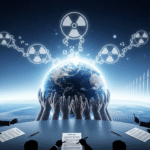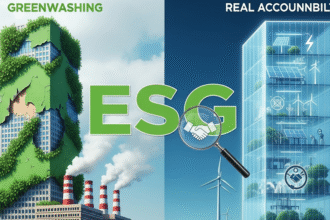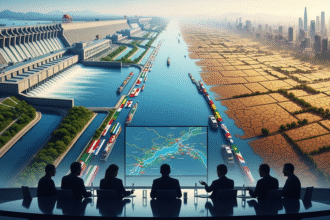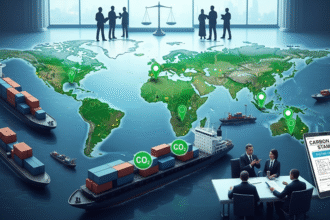The world is not only changing to clean energy as an environmental necessity, but this is a geopolitical game changer. With governments and corporations competing to decarbonize, new supply chains, technologies, and alliances are being created. Two of the core aspects of this change include green hydrogen and rare earths that explain how the energy transition is transforming the world power politics.
Oil to Electrons: One that is a Changing Energy Map.
Oil and gas have become the determinants of international relations over a hundred years. It was the centrality of hydrocarbons that gave the Middle East the strategic importance it has, caused the appearance of petro-states, and shaped the trend of military interventions. This old map is dissipating as the world goes green. However, clean energy is not necessarily devoid of geopolitics, it establishes its dependencies and points of leverage.
Renewables such as wind and solar are abundant in the geographical areas, whereas the infrastructures and resources required to extract, store and distribute the clean energy are centralized. The unevenly distributed critical minerals include lithium, cobalt, nickel, and rare earth elements which are the key to technologies like batteries, fuel cells, and electrolyzes. Likewise, green hydrogen, which is presented as the foundation of the carbon-neutral future, would need enormous investments and global collaboration in order to be effective at scale.
Green Hydrogen: Potential and Compete.
Hydrogen is not a source of energy but is an energy carrier. Produced using renewable electricity with the electrolysis process, it is made into green hydrogen, which does not produce carbon when it is produced. Going directly to areas of the economy that are difficult to electrify, including heavy industry, shipping, and long-haul aviation, can be decarbonized with green hydrogen. It might also be used as a buffer store of intermittent renewable power.
Due to these benefits, nations are identifying themselves as exporters or importers of green hydrogen in the future. The European Union has established big targets and it is funding import corridors around North Africa and the Middle East. Australia and Chile are the countries who want to become leading suppliers and use the great amounts of renewable sources. Hydrogen is regarded as a priority to energy security and industrial performance of Japan and South Korea, which signed agreements throughout the world.
It is an international contest that poses new geopolitical questions. Who is going to control the production of electrolyzes? Will green hydrogen trade recreate the weaknesses of fossil fuels, or diversify energy relations? The infrastructure choices, such as whether to use pipeline or shipping to deliver ammonia, whether to be regional or global, will define the trend of dependence over the decades.
Rare Earths: The Clean Tech Mineral Foundation.
In the case of green hydrogen being a new form of energy, rare earths represent the material basis of the transition. These 17 components are what high-performance magnets known in wind turbines and electric vehicles, in electronics, defense systems, and renewable-energy technologies require. Unlike their name suggests, the rare earths are rather abundant, though economically viable deposits are scarce and the processing is hard on the environment.
Today, China controls a majority of the supply of rare earths in the world through mining, refining and processing over 80% of the world supply. This provides Beijing with considerable bargaining power among the downstream industries in the world. China gave a demonstration of the weaponization of the supply chain when it limited the export of rare earth to Japan in 2010 due to a conflict involving maritime issues. Since that time, nations have attempted to diversify supply: they have invested in mines in Australia, the United States and Africa; they have invested in recycling projects; and are investigating alternatives.
Mining of rare earths is not the only geopolitics. Capacity to process, environmental requirements and technological expertise count. Lots of nations can discover that they can extract minerals out of the earth, but nevertheless rely on some players in refining and sophisticated fabrication. This forms possible areas of choke points like those at oil transit routes.
New Alliances, Industrial Policy.
The green hydrogen and rare earths challenge is two-fold and is resulting in the emergence of new types of international collaboration. Energy transition partnerships–among renewable energy providers, technology suppliers, and customers–are developing. The EU Hydrogen Strategy envisages trans-Mediterranean links; Japan engages in partnerships in Asia and the Middle East; the U.S. Inflation Reduction Act promotes incentives to onshore critical-mineral chains.
Industrial policy, which was a taboo in liberal economies, has been brought back into fashion. To decrease their exposure and generate green employment, governments are subsidizing the manufacturing of electrolyzes, batteries, and critical minerals nationally. This may encourage innovation, but it is liable to lead to subsidy wars and protectionism. Meanwhile, developing countries are trying to go higher up the value chain, exporting not only raw materials but processed products and green energy itself.
Sustainability and Security threat.
Similar to fossil fuel, clean-energy supply chain may create security dilemmas. Nations can hoard strategic minerals, exert export quotas or negotiate monopoly of access to areas with valuable resources. Already, mining rights are being competed over in Africa, Latin America and the Arctic. The scramble of the most important minerals may repeat the “resource curse” that befall most of the oil producers without good governance and environmental protection.
There is also the question of green hydrogen infrastructure in terms of strategy. The pipelines that run through unstable areas or shipping lanes that can be easily disrupted might be flashpoints. Certification and carbon contents standards will affect which suppliers will have access to the market. When large economies use incompatible standards, then the trading in green hydrogen may split into competing blocs.
Cooperation Opportunities.
Nevertheless, in spite of these dangers, the energy transition also opens up new possibilities of collaboration that were not present during the fossil-fuel age. Due to the broader geographical spread, there is not so much natural scarcity of renewable resources. Costs can be lowered through shared investments in the technology, infrastructure and capacity-building and the benefits shared. Multilateral forums such as the international renewable energy agency (IRENA) and the Clean energy ministerial are forums of discussion of standards and the best practices.
Recycling and circular-economy can reduce the reliance on new mining in the case of rare earths. Disruptions in the short-term can be mitigated by strategic stockpiles and clear supply chains. In green hydrogen, collaborative research efforts, pilot corridors, and aligned certification systems may expedite implementation and decrease geopolitical tensions.
The Part of Developing Countries.
Developing nations are not only the passive arenas of competition, they may also actively design the transition. North Africa, the Middle East, and some parts of South America have great potential of solar and wind energy and can be the significant exporters of green hydrogen. States in Africa and Latin America that are lithium and cobalt rich as well as those with rare earths will be able to get better offers requiring local processing, employment, and environmental conditions.
Yet, to see these prospects realized, there has to be good governance, infrastructure spending and capacity to handle rival foreign suitors. Without proper planning the green transition would be repeating the same dependency and inequality patterns in a new form.
Conclusion
De-carbonization does not mean that the geopolitics of energy are going away, but it is undergoing transformation. Green hydrogen and rare earths are examples of how the clean-energy future will continue to be a contest involving leverage and strategy. However, in comparison to oil, where the lack of oil and geography predetermined strict trends, the new landscape creates an opportunity to diversify and collaborate more.
The smart way to handle this transition would be to foresee the weaknesses of supply-chain, invest on technology and competencies, and establish equitable international relationships. Should states see the energy transition as a zero-sum game of dominance it is possible to repeat the conflicts of the fossil-fuel era. When they consider it a collective problem that needs coordination, they have a chance to establish a more sustainable, secure and equitable twenty-first century energy system.









